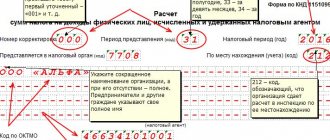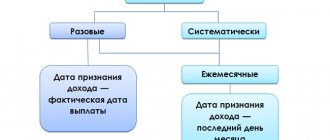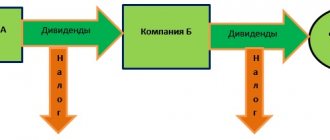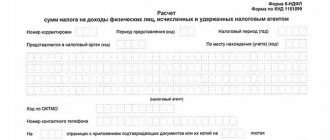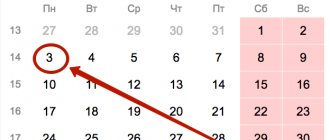Right to earnings
An employee sent on a business trip has the right to guarantees, in particular, to maintain a job and average earnings (Article 167 of the Labor Code of the Russian Federation). The average salary is paid for all days on a business trip according to the schedule established for the employee. Even days spent on the road are paid (clause 9 of the Regulations, approved by Government Decree No. 749 of October 13, 2008).
For your information
Employees who fall ill on a business trip do not retain their average earnings for the days they were ill. During this time, employees are entitled to sick pay and daily allowance. Expenses for renting housing need to be reimbursed only if the employee was not placed in a hospital (clause 25 of the Regulations, approved by Government Resolution No. 749 of October 13, 2008).
Please note that during a business trip you cannot pay wages instead of average earnings (Article 167 of the Labor Code of the Russian Federation). Similar explanations are given by labor officials (letter of Rostrud dated 02/05/2007 No. 275-6-0). Moreover, if the average earnings during a business trip turn out to be less than the employee’s salary for this period, then the difference can be compensated to him.
Taxation of travel expenses: general rules
For an employee sent on a business trip, the employer is obliged to:
1. Pay the average salary for the period of the trip. You can find out how it is calculated in the article “How the average monthly salary is calculated.” Personal income tax on an average travel salary is calculated in the same way as on a regular salary while a person is at work. In general, according to the same principles, travel and regular salaries are reflected in tax reporting (but there are nuances here - we will look at them later in the article).
2. Pay for travel and accommodation where the person is sent. Such expenses are not subject to tax, since they are not the employee’s income (Clause 3, Article 217 of the Tax Code of the Russian Federation). Information about them after a business trip is not reflected in 6-NDFL.
3. Issue daily allowances. These are amounts that an employee can use for personal purposes - usually associated with paying for food, public transport and taxis within the locality to which he left. You can find out more about the amount of daily allowance that an employee is entitled to receive on a business trip in the article “What is the amount of daily allowance for business trips.” In the manner prescribed by law, daily allowances are subject to personal income tax and are subject to reflection in tax reporting. Let's take a closer look at the features of calculating and reflecting in form 6-NDFL those components of travel payments that are subject to personal income tax - the average salary and partially daily allowances.
Reflected in the form
When paying average earnings on a business trip, 6 personal income tax is filled out as follows:
- line 100 – the last day of the month for which the average earnings were calculated (the date of calculation of wages);
- line 110 – day of payment of average earnings;
- line 120 – the next business day after the date in line 110;
- line 130 – the amount of average earnings issued for the days of the business trip;
- line 140 – the amount of personal income tax withheld from the payment on line 130.
Since average earnings are part of the salary, the date of income is considered to be the last day of the month for which this payment was accrued. This day must be indicated in line 100 of the 6-NDFL calculation (see, for example, letter of the Ministry of Finance dated 04/09/2018 No. 03-04-07/23964, communicated to the Federal Tax Service by letter of the Federal Tax Service dated 04/17/2018 No. BS-4-11/7320) .
Read also
08.08.2016
Taxation of excess daily allowances: general points
Daily allowances are not taxed within the limits of amounts per employee (clause 3 of Article 217 of the Tax Code of the Russian Federation):
- 700 rubles per day - for business trips around Russia;
- 2500 rubles per day - for foreign business trips.
Amounts falling within the specified limit should not be reflected in any way in the 6-NDFL report.
This is the fundamental difference between daily allowances and tax deductions, which, in cases provided for by law, reducing personal income tax to zero, are nevertheless subject to reflection in reporting.
Taxable daily allowances, like wages, are subject to inclusion in tax reporting. In this case, daily allowances are recognized as income at the end of the month in which the accounting department approves the advance report of the employee returning from a business trip (subclause 6, clause 1, article 223 of the Tax Code of the Russian Federation).
The employee submits the report within 3 days after returning to work. The deadline for approval of the accepted report is determined by the employer himself (clause 6.3 of Bank of Russia Directive No. 3210-U dated March 11, 2014). By analogy with salaries, tax on excess daily allowances, which are recognized as income at the end of the month, is withheld from the next next salary (in practice, from one of its parts, an advance or the principal amount). It doesn’t matter when the employee actually received the daily allowance; the moment they were received is not reflected in the reporting in any way and does not affect the procedure for its preparation.
Let's look at an example of how travel allowances are recorded in 6-NDFL if they are presented in excess of the limit.
Subscribe to our newsletter
Yandex.Zen VKontakte Telegram
Who submits 6-NDFL and when?
All tax agents submit 6-NDFL .
The following deadlines for submitting the report are established:
Components of the 6-NDFL :
6-NDFL is transmitted electronically. A paper report can be submitted if there are up to 10 people.
6-NDFL report is submitted depends on which organizational unit submits the report:
From 2021, if several detached houses are located on the territory of one municipality, then one “responsible” unit can be appointed, which will submit a report for everyone. You just need to notify the Federal Tax Service about this in advance using the appropriate form.
For settings for selecting the “responsible” unit in ZUP 3, see - Possibility of selecting the “responsible” unit for submitting reports on the territory of one municipality
6-NDFL report includes data on calculated and withheld personal income tax. There is no information on the listed personal income tax in the report.
Line 020 6-NDFL what is included, what amounts to include: examples 2021
Calculation according to Form 6-NDFL is one of the reports relating to personal income tax, which is submitted by employers to inform the taxman about the taxation of employee income. The report is quarterly, which means you have to fill it out regularly.
The calculation is not large, it includes two small sections, but there are quite a lot of difficulties in filling them out. One of the questions that employers are regularly asked when preparing Form 6-NDFL is what amounts of income should be included in line 020 of Section 1, and what is not included there.
Where is line 020 in 6-NDFL?
Field 020 “Amount of accrued income” is located on the second page of the 6-NDFL calculation in Section 1.
This part of the calculation is compiled on an accrual basis from the beginning of the year, that is, the data to be reflected must be summarized from 01.01 to the last day of the month ending the period:
- for 1 sq. — show data for the period from 01/01 to 03/31;
- for the half-year - from 01.01 to 30.06;
- in 9 months — from 01.01 to 30.09;
- for the year - from 01.01 to 31.12.
Report 6-NDFL is filled out once for each period for all employees. There is no need to separate indicators for each worker. Personal data is submitted only once a year in the form of 2-NDFL certificates - for 2021, certificates are submitted according to new deadlines - until March 1, 2020 inclusive.
When drawing up Section 1 6-NDFL, one more important point must also be taken into account: different types of income may be taxed at different personal income tax rates, so lines 010 to 050 are filled out separately for each rate. How many rates were applied in relation to personnel income in the reporting period, the number of lines from 010 to 050 will be filled in.
The results are summed up in lines 060 - 090 in total for all completed fields 010-050.
and a completed sample 6-NDFL report can be found here.
What does it include?
The Procedure for filling out 6-NDFL says little about line 020, explaining that it needs to reflect generalized data on accrued income for the period, calculated on an accrual basis for all employees in total.
What is meant by accrued income? Do these include non-personal income tax accruals?
In this field you need to show the amount before deducting personal income tax. This indicator differs from what employees receive in their hands; they are given the result of the difference between accrued income and personal income tax.
For the indicator entered in line 020, the following rules must be met simultaneously:
- must be calculated before tax;
- must be subject to personal income tax at the rate from field 010;
- must be calculated in total for all persons to whom monetary or material resources were assigned for payment;
- must be calculated on a cumulative basis;
- must contain charges subject to taxation.
In field 020 you need to include:
- wages and advance for the first half of the month (how to reflect the advance in 6-NDFL);
- bonus accruals;
- bonuses in the form of incentive payments;
- payment of sick leave;
- payment for vacation and compensation for it;
- financial assistance over 4,000 rubles;
- dividends;
- other payments to employees not listed in Article 217 of the Tax Code of the Russian Federation.
What amounts do not need to be included?
Amounts that are not subject to taxation at the rate specified in field 010 are not included in line 010.
The list of income exempt from personal income tax can be found in Article 217 of the Tax Code of the Russian Federation.
In accordance with this article of the Tax Code of the Russian Federation, the following are not included in line 010 of form 6-NDFL:
- state benefits (payments for sick leave are an exception);
- compensation for health damage;
- compensation payments for housing, utilities, travel, food;
- severance pay;
- compensation for advanced training and training;
- compensation for health vouchers;
- compensation to relatives of government or military employees in the event of their death in the line of duty;
- daily allowance within 700 rubles. (RUB 2,500 for foreign business trips);
- payment of travel expenses;
- financial assistance within 4000 rubles. (some types of material support are completely exempt from personal income tax);
- other income, the list of which is given in Article 217 of the Tax Code of the Russian Federation.
Example of filling out section 1 for 2021
An organization with 5 employees fills out form 6-NDFL for the 1st quarter of 2021, and in the first three months there were the following types of accruals (data are given in total for all employees):
- salary for January = 150000;
- salary for February = 123000;
- salary for March = 135000;
- vacation pay in February = 15,000;
- sick leave in February = 3000 (how to reflect sick leave in 6-NDFL);
- paid for business trip in March = 2500.
One employee has a child, he is entitled to a deduction of 1,400 rubles.
Of these accruals, only business trip payments are not subject to personal income tax; the remaining amounts are subject to taxation at a rate of 13% - the indicator in line 010 of the 6-personal income tax calculation.
Total accrued income for the 1st quarter = 150,000 * 3 months. + 15000 + 3000 = 468000 - this amount is shown in line 020.
In line 025, 0 is entered, since there were no dividend payments.
In field 030 - the amount of deductions for the 1st quarter of 2021 = 1400 * 3 = 4200.
In field 040 - the calculated tax on an amount equal to the difference in income and deductions (13% * (468000 - 4200) = 60294.
In field 045 - 0 is entered, since there were no dividend payments.
In line 050 - 0 is entered, since the organization does not have foreign workers with a patent who pay advance payments on their own.
060 — number of employees — 5.
070 - tax withheld, may differ from that calculated in line 040 (this field will include personal income tax withheld from wages for December 2021 (19318), and will not include personal income tax withheld from wages for March 2021 (17368)), that is, the tax must be withheld in size = 19318 + 19318 + 18148 = .
080 - set to 0, since there was no income from which the employer could not withhold income tax.
090 - set to 0, the employer did not return personal income tax due to excessive withholding.
An example of filling out lines in Section 1 of form 6-NDFL (including fields 020):
conclusions
Field 020 in the 6-NDFL calculation is necessary to reflect data on how much income the employer accrued in favor of staff in the reporting period.
The indicator is given in total for all citizens working for a given person under employment or civil law contracts. It is considered a cumulative total from the beginning of the year.
You only need to include those amounts that are subject to personal income tax. This does not include tax-exempt amounts.
Source: https://9trud.ru/stroka-020-6-ndfl/
Form 6-NDFL for the 3rd quarter of 2021
Each enterprise that uses the labor of hired workers or third-party individuals must promptly report the taxes paid on the income of these employees.
For this purpose, a reporting form is prepared and submitted to the territorial Federal Tax Service.
The article will tell you how to correctly fill out the 6-personal income tax form for the 3rd quarter of 2021, what filing deadlines exist and what the employer faces for failure to comply with the requirements.
General characteristics of 6-personal income tax: who prepares and in what time frame
The document under consideration is prepared on the basis of the requirements of the Order of the Federal Tax Service dated October 14, 2015 No. ММВ-7-11/450. In this regulatory legal act, the legislator stipulates the form, content and procedure for submitting reports to the tax office.
6-NDFL for the 3rd quarter of 2021 is a quarterly report submitted by employers and containing information on tax deductions from employee salaries. In this case, not only personnel employed on the basis of agreements are taken into account, but also those who collaborate outside the state, on the terms of the GPA.
It is important to note that in addition to salary and fees under contracts, you need to make deductions from dividends, gifts worth more than 4 thousand rubles, and interest-free loans. In addition, taxes are paid on the income of intellectual property rights holders in accordance with licensing agreements.
For the 3rd quarter of 2021, you must report no later than October 31.
6-NDFL is submitted by individual entrepreneurs, legal entities, lawyers and notaries. The form in question must be submitted no later than the first day of the month that follows the reporting period. If the date falls on a weekend or holiday, the submission is shifted to the first subsequent working day.
How to apply for 6-personal income tax for the 3rd quarter of 2021 and where to submit reports
The report form consists of a title page and two sections - the first contains generalized indicators entered in ascending order from the beginning of 2021, and the second reflects information on dates, amounts of income actually received and personal income tax withheld.
Filling out the document is completely unified, so before the procedure it is recommended to familiarize yourself with the contents of the said order of the Federal Tax Service and the requirements of the Tax Code of the Russian Federation.
First of all, the contractor needs to fill in the TIN and KPP codes of the enterprise, the fields for which are provided at the top of the sheet.
After this, below, on the left side, the adjustment number is entered, by which the Federal Tax Service employee can see whether the report is being submitted for the first time or not.
When submitting reports, this form uses codes indicating the period of submission. Employers need to navigate these values.
In the context of 6-personal income tax, the code “33” is used, which denotes data for 9 months of the current year, with a breakdown of payments and taxes for the quarter.
In addition, there are codes:
- 21 – to indicate the first quarter.
- 31 – half-year.
- 34 – used to prepare an annual report.
Afterwards, on the right side, the year of the reporting period is entered. Below is a line with information about the tax service where reports are submitted. The division code consists of two parts - the first two digits indicate the region of the country where the territorial body is located, and the second two belong directly to the tax service. The 6-personal income tax must be submitted at the place of registration of the individual entrepreneur or registration of the LLC.
This should be followed by the full name of the company without abbreviations and a contact phone number. After this, the code of the municipality corresponding to the location of the enterprise is indicated.
Next, you need to indicate how many sheets the report is to be submitted on. This is followed by a visa for the head of the company, which sends a 6-NDFL and a block filled out by a tax officer.
If the entrepreneur did not pay individuals, then you do not have to submit the report at all.
However, if this is not the case and the documents are not provided, then the manager may have problems in the future, since the company’s activities can be checked by the Federal Tax Service at any time.
Following the title page, the manager must fill out section 1. Here you need to reflect information about each personal income tax rate used by the enterprise.
Section 1 contains information about:
- Tax rate percentage (010). The most popular is 13%.
- The amount of accrued taxes (020). All employee income that is subject to tax is written here. They are considered as a cumulative total starting from January 2021.
- Tax deductions (030). To be filled in if they were provided to employees.
- Personal income tax amount (040).
- Amount of advances (050). Used if the organization uses the services of foreign persons. If there are none, you need to write 0.
Next comes the results block of the first section, where you need to indicate information about the total number of people who have received income since the beginning of 2019 (060), the total amount of tax withheld at all rates (070).
In columns 080 and 090, information is entered, personal income tax amounts that were not possible to withhold, and amounts withheld by mistake and returned to the payer.
If the data in line 070 does not match 040, then you should not look for an error in the calculations. It is possible that tax amounts were accrued earlier than they were withheld from employees.
The second section of the submitted report differs in that it reflects not annual data, but for the quarter.
Column 100 contains the day when the employee received his salary, and 110 - when the deduction amount was withheld. Here you need to write the entire date, including the year, month and day. Column 120 indicates the date when the tax must be paid in accordance with Art. 226 Tax Code of the Russian Federation.
In field 130, the performer needs to write the amount of income, the value of which preceded the deduction. In column 140, income for the 2nd quarter is written.
Accounting for travel allowances
Accounting for settlements with seconded employees is kept on account 71 “Settlements with accountable persons” (Chart of Accounts, approved by Order of the Ministry of Finance dated October 31, 2000 No. 94n).
Documented travel expenses are taken into account as part of the current period's expenses in expense accounts. Postings for recording travel expenses
| Contents of operation | Debit | Credit |
| An advance was issued for a business trip | 71 | 50, 51 |
| Business trip expenses are included in expenses | 25, 26, 44 | 71 |
| Unspent accountable amounts were returned | 50, 51 | 71 |
How to reflect above-limit daily allowances in 6-NDFL: example
Ivanov A.A. On July 8, 2021, he went on a business trip for 15 days, receiving a daily allowance in the amount of 15,000 rubles. Upon his return, he prepared an advance report and submitted it to the accounting department on July 23. For July, Ivanov received his salary on August 7.
Accountants will need:
1. Calculate the taxable amount of excess daily allowance.
It's simple: divide 15,000 by 15 days of business trip - it turns out 1,000 rubles per day. Of these, 300 rubles. (1,000 – 700) is the employee’s taxable income. Total taxable income for a business trip is 4,500 rubles (300 × 15 days).
2. Reflect in the 6-NDFL report for 9 months (in terms of taxable amounts for excess daily allowance):
1. In section 1:
- in column 020 - 4,500 rubles of income;
- in columns 040 and 070 - 585 rubles each (calculated and withheld tax).
2. In section 2:
- in column 100 - 07/31/2020 (the date when daily allowances are recognized as income);
- in column 110 - 08/07/2020 (personal income tax is withheld from daily allowances - from the nearest salary relative to the day they are recognized as taxable income);
- in column 120 - 08/10/2020 (personal income tax is transferred to the budget);
- in column 130 - 4500 rubles (income in the form of daily allowance);
- in the column 140 - 585 rubles (personal income tax on daily allowance).
The terms we considered for calculating and reflecting travel payments in the 6-NDFL report are determined in relation to the status of an individual as an employee of an organization. But what about these procedures if, at the time the daily allowance is recognized as received and taxable income, the employee is fired? This scenario can be classified as a special one - let’s get acquainted with the accounting procedure in this case.
Reports for the 1st quarter of 2021 should be submitted on the new form 6-NDFL, approved by order of the Federal Tax Service of Russia dated October 15, 2020 No. ED-7-11/753. How to fill out the calculation on the new form? The answer is given in the ready-made solution ConsultantPlus. You will find even more useful materials if you sign up for a free trial access to K+
For 2021, you must report on the old form, approved by order of the Federal Tax Service of Russia dated October 14, 2015 No. ED-7-11/450
Payment for a business trip on a day off
Average earnings during a business trip are paid for working days, according to the organization’s schedule. Even if the business trip is long, only daily allowances are paid for days off. Average earnings in this case are not expected. After all, the employee does not work on weekends, but rests (clause 9 of the Business Travel Regulations).
There is an exception to this rule. If an employee nevertheless worked on a weekend or a holiday while on a business trip or was on the road, then during this time he must be paid as for work on a weekend. The Labor Code of the Russian Federation provides for two methods of payment for work on weekends and holidays:
- at a single rate of tariff if the employee takes an additional day off (time off);
- double the amount if the employee does not take time off.
Instructions for filling out 6-NDFL
If you reflect the dismissal of an employee in the middle of the month in 6-NDFL, then everything is simple. We reflect the accrued amounts and personal income tax in section 1, and in the second - payments to the employee, withheld and transferred tax in one block.
Let us show with an example how to reflect dismissal in 6-NDFL. On May 12, 2020, the employee quits. He was credited with:
- salary for May - 10,000 rubles;
- compensation for vacation - 5000 rubles.
The tax withheld was:
An example of filling out 6-NDFL when dismissing an employee
Several times, the Federal Tax Service explained the procedure for filling out a report if the day of completion of work fell on the last working day of the quarter (for example, Letter dated November 2, 2016 No. BS-4-11 / [email protected] ). In this case, the last date for transferring personal income tax moves to the next quarter. In this case, the accrued final payment and the tax on it must be reflected in section 1. But in the second section there is no need to reflect these amounts in the dismissal quarter. They should be included in this section in the next quarter in which the tax payment date falls.
Let's return to our example: suppose that an employee quits on June 30, 2020.
Then we will include the final settlement with the employee in the third quarter and fill out section 2 taking into account this data.
Sample of filling out 6-NDFL upon dismissal on the last working day of the quarter
Special scenarios: reporting per diem upon dismissal of an employee
For clarity, let's consider another example.
Ivanov A.A. submitted a report on the business trip on July 5, 2021, then, after working in the company until the 16th, he wrote a letter of resignation. The parties agreed to terminate labor relations on July 17 and make all payments.
The question arises - how to withhold personal income tax (and reflect it in reporting) if the day on which the excess daily allowance is recognized as income - July 31, 2021 - comes later than the day the employee is dismissed?
In this case, personal income tax is subject to withholding simultaneously with calculations upon dismissal. Form 6-NDFL records (in section 2):
- in column 100 - 07/31/2020 (date of recognition of income in the form of excess daily allowance received);
- in column 110 - 07/16/2020 (date of personal income tax withholding - as part of settlements on the day of dismissal);
- in column 120 - 07/17/2020 (date of transfer of tax to the budget).
Such an unusual approach, in which the date of withholding and transfer of tax to the budget precedes the date of recognition of taxable income as received, was proposed by a Federal Tax Service employee in an interview with specialized media. You can view the material on the department’s website using this link.
An alternative approach was voiced in the letter of the Federal Tax Service of Russia dated May 11, 2016 No. BS-3-11 / [email protected] - it concerns vacations with subsequent dismissal, but by legal analogy, some of its provisions are applicable to the case under consideration. In the letter, the department recommends recording the date of dismissal in column 100 of section 2 of the form - referring to clause 2 of Art. 223 of the Tax Code of the Russian Federation (and as a result, you need to enter the same date in column 110).
Above-limit travel allowances, personal income tax and general mandatory contributions for 2017
The employer has the right to send an employee on a business trip in Russia or abroad. The business traveler is compensated daily for travel expenses. The date of payment of daily allowances is the day they are accrued. The day of approval of the business trip report is the date of receipt of income (in the form of daily allowance).
In 2021, a fixed limit on daily expenses has been determined, from which general mandatory insurance and personal income tax contributions are not calculated (Read also the article: → “Deadlines for submitting reports on 6-personal income tax in 2021”).
| Type of business trip | Legal limit on travel expenses for one day |
| Business trip to Russia | 700 rub. |
| Business trip abroad, outside the Russian Federation | 2,500 rub. |
The tax-free limit on contributions is established at a time; it cannot be determined on a cumulative basis. An organization has the right to prescribe in local regulations its daily allowance for business trips within the Russian Federation and beyond its borders. Moreover, it can exceed a fixed limit. Such daily allowances are called excess (i.e., above the established norm, limit). The amount exceeded by law will be subject to personal income tax and contributions for compulsory insurance (in addition to the injury tax) in the generally accepted manner.
This innovation has been in effect since 2021. Previously, travel expenses were not subject to general mandatory contributions if the limits were specified in the organization’s local acts.
So, from 2021, excess travel expenses are subject to personal income tax and mandatory insurance contributions, regardless of whether the excess amounts are fixed in the internal regulations of the organization or not.
Personal income tax is calculated on the final day of the month in which the business trip report was agreed upon. The tax is withheld after this date on the first payment, mainly from salary. It can be transferred to the budget on the day the income is paid or the day after that, but not later.
Uniform requirements for registration of 6-NDFL
This is a standard reporting form according to which a tax agent (individual entrepreneur, organization) reports for the income of its personnel. The document has been introduced and applied since 2021. Its structure consists of a title page and 2 sections. This type of reporting is generated on an accrual basis for the first quarter, six months, 9 and 12 months.
Form 6-NDFL
Entries are made based on available information on income, deductions, and personal income tax. The tax agent must enter the information. He also submits the completed document to the Federal Tax Service.
The rules for filling out this form are determined and formalized by the Federal Tax Service of the Russian Federation. Amounts and details are required to be filled out. If there are not enough pages for the information that needs to be entered, then the required number of pages is taken to fill out. In familiar places that are not filled in, dashes are added.
The form can be filled out on a computer and printed. Then dashes are not placed in empty positions. The font used is Courier New 1 (6-18 points).
The date is written on each completed page and the signature of the head of the organization (individual entrepreneur, notary, lawyer, representative of the tax agent) is affixed.
Operating period for calculation
What period of work should be taken into account when calculating SZ for a business trip?
The calculation is based on the previous 12 months and the salary paid during this period. It is important to remember that only working days are taken into account, not calendar days.
If a worker is sent to a task in the first month of work at an enterprise, then his SZ will be calculated for the period from the first working day in the company to the first day of the trip (clause 7 of the Regulations, approved by Decree of the Government of the Russian Federation of December 24, 2007 No. 922).
The calculation includes payments provided for by the current wage system.
Excluded days
The period for calculating working days for determining SZ does not include:
- vacation days;
- days of illness confirmed by a certificate of incapacity for work;
- weekends and holidays;
- time of maternity leave;
- downtime due to the fault of the employer;
- vacation “at your own expense”;
- time of previous business trips;
- additional paid days to care for children with disabilities.
Calculation of SZ without taking into account the above periods is called with excluded days.
Calculation example for excluded days
This example considers the calculation of travel allowances with excluded days, which were the days of regular annual leave.
The business trip lasts from July 1 to July 3, 2021, 3 working days. To calculate, you need to take the amount of payments from 07/01/2018 to 06/30/2019. Monthly salary is 15,000 rubles:
- for the period from 07/01/2018 to 03/31/2019, the employee was accrued 135,000 rubles;
- From April 1 to April 30, the employee was on vacation, vacation pay amounted to 15,358 rubles. 36 kopecks;
- from May 1 to June 30 he received 30,000 rubles;
- the total amount of payments for 12 months will be 180,358 rubles. 36 kopecks
Actual salary received:
- RUB 180,358 36 kopecks – 15,358 rub. 36 kopecks = 165,000 rubles.
Since vacation time is not included in the calculation. For the period from 07/01/2018 to 06/30/2019, according to the production calendar, there are 247 working days. 22 of them occurred during vacation. There is no need to take them into account. All other days were worked in full by the employee. SZ will be calculated as follows:
- 165,000 / 225 working days = 733.33;
- 733.33 × 3 working days of business trip = 2199.99 rubles.
